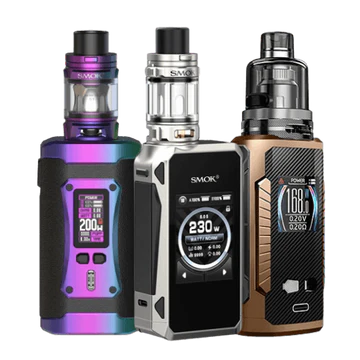Vape Battery: A Comprehensive Guide to Understanding Vape Battery Types, Safety, and Maintenance
The vape battery is one of the most crucial components of any vaping device, providing the power needed to heat the coil and produce vapor. Understanding the different types of vape batteries, how they work, and how to maintain them properly is essential for getting the best performance and ensuring safety. In this guide, we’ll explore everything you need to know about vape batteries, including how to choose the right one for your device, how to maintain it, and what safety precautions to take.
Thank you for reading this post, don't forget to subscribe!The vape battery is the powerhouse of any vaping device, providing the necessary energy to heat the coil and produce vapor. It plays a vital role in the overall performance of your vape, affecting everything from battery life to the quality of vapor produced. With so many types of vape batteries available, it’s important to understand their features, benefits, and the best practices for maintaining and charging them.
In this article, we will break down the different types of vape batteries, how they work, how to select the right battery for your device, and most importantly, how to use and care for your vape battery to ensure safety and longevity. Whether you are new to vaping or an experienced user, understanding the fundamentals of vape batteries will enhance your vaping experience and help you avoid common issues.
Types of Vape Batteries
Vape batteries come in several types, each offering different performance characteristics. The most common types are lithium-ion (Li-ion) and lithium-polymer (LiPo) batteries, both of which are rechargeable and widely used in modern vaping devices.
Lithium-Ion (Li-ion) Batteries
Lithium-ion batteries are the most common type of vape battery. They are known for their high energy density, which allows them to provide longer-lasting power for devices. Li-ion batteries are typically used in regulated mods, pod systems, and vape pens.
These batteries are reliable, efficient, and widely available. They offer a balance between size, power, and longevity, making them suitable for most vaping needs.
Lithium-Polymer (LiPo) Batteries
Lithium-polymer batteries, also known as LiPo batteries, are a more compact and lightweight option compared to Li-ion batteries. They are often used in smaller, more portable devices due to their thin and flexible design. LiPo batteries have a slightly lower energy density than Li-ion batteries but are still an excellent choice for smaller devices where space is limited.
These batteries can also provide higher current draws, making them ideal for more powerful mods that require a higher discharge rate. However, they tend to have a shorter lifespan compared to Li-ion batteries.
Built-In vs. Removable Batteries
Vape devices can either have built-in batteries or removable ones. Each type has its own set of advantages:
- Built-In Batteries: These batteries are integrated into the device and cannot be removed or replaced. They are more common in pod systems, vape pens, and other compact devices. Built-in batteries tend to have a more streamlined design, but once the battery’s life is depleted, the entire device must be replaced.
- Removable Batteries: These are commonly used in more powerful devices, such as box mods. With removable batteries, you can replace the battery once it starts to degrade, which extends the overall lifespan of the device. Removable batteries are also more versatile, as they allow users to carry spare batteries for longer sessions.
How Vape Batteries Work
Vape batteries function by powering the heating element (coil) in the vape device. When you press the fire button or activate the draw, the battery sends power to the coil, which then heats up the e-liquid in the tank or pod, turning it into vapor.
The performance of your vape battery affects how quickly the coil heats up, how much vapor is produced, and the quality of the vapor. A high-quality battery will deliver consistent power, which is essential for a satisfying vaping experience.
Choosing the Right Vape Battery
Selecting the right vape battery is critical to getting the most out of your device. Several factors should be considered when choosing a battery, including capacity, discharge rate, and compatibility with your device.
Battery Capacity (mAh)
The capacity of a vape battery is measured in milliampere-hours (mAh). A higher mAh rating indicates a larger battery capacity, which translates into longer battery life. If you vape frequently or at higher wattages, you will need a battery with a higher mAh rating. For regular users, batteries with capacities between 2500mAh and 3000mAh are typical.
Discharge Rate (C Rating)
The discharge rate (measured in C rating) refers to how quickly the battery can release its stored power. A higher C rating means the battery can handle higher currents and power demands, which is important for high-wattage devices or sub-ohm vaping. Make sure your battery has an adequate C rating to meet the needs of your device.
Battery Voltage
Different devices require different voltage levels, and it’s essential to select a battery that matches your device’s specifications. Most vape devices are designed to work within specific voltage ranges, and using a battery with too high or too low voltage could result in performance issues or even damage to your device.
Compatibility
Always check that the battery you choose is compatible with your specific vaping device. Using an incompatible battery could result in poor performance or safety risks. When in doubt, consult the device manufacturer for recommended battery types.
Charging Your Vape Battery
Proper charging is crucial for extending the life of your vape battery and ensuring safe operation. Here are some key points to keep in mind when charging your vape battery:
- Use the Correct Charger: Always use the charger designed for your specific device and battery type. Avoid using third-party chargers, as they may not be optimized for your battery and can lead to overheating or other issues.
- Avoid Overcharging: Overcharging your vape battery can degrade its performance and shorten its lifespan. Always remove the device from the charger once it reaches 100% to prevent overcharging.
- Charge in a Safe Environment: Charge your vape battery in a well-ventilated area, away from flammable materials. Never leave a charging battery unattended for long periods, and avoid charging while sleeping.
- Use a Battery Safety Charger: Consider using a charger with safety features, such as short-circuit protection and overcharge protection, to ensure that your battery remains in good condition.
Maintaining Your Vape Battery
Proper maintenance is key to ensuring the longevity and safety of your vape battery. Here are some tips to help you maintain your battery:
- Store Properly: When not in use, store your vape battery in a cool, dry place. Avoid exposing the battery to extreme temperatures or direct sunlight, as this can damage it over time.
- Keep the Terminals Clean: Clean the battery terminals regularly to ensure a proper connection between the battery and your device. Dirt or residue on the terminals can affect performance and lead to poor vapor production.
- Replace When Necessary: Over time, vape batteries will degrade and lose their capacity. If you notice a significant decrease in battery life or performance, it may be time to replace the battery.
- Avoid Over-Discharging: Don’t allow your battery to discharge completely before charging it again. Keeping the battery within an optimal charge range (usually between 20% and 80%) will extend its lifespan.
Vape Battery Safety Tips
Vape battery safety is a top priority, as improper handling can lead to accidents, fires, or explosions. Here are some essential safety tips:
- Don’t Use Damaged Batteries: If your battery is damaged, swollen, or showing signs of wear, replace it immediately. Never use a damaged battery, as it can pose a serious safety risk.
- Use the Correct Battery Case: Always store your vape batteries in a protective case to avoid accidental short circuits. Never carry loose batteries in your pocket or bag without a case.
- Avoid Extreme Temperatures: Avoid exposing your vape battery to extreme cold or heat, as this can damage the battery and reduce its lifespan.
- Don’t Over-Discharge: Never allow your battery to run completely empty, as this can damage the internal components. Recharge when it reaches around 20%.
- Charge Safely: Always charge your vape battery in a safe, non-flammable area and never leave it unattended while charging.
Conclusion
Understanding vape batteries is essential for any vaper, as they are the key to your device’s performance and longevity. Choosing the right battery, maintaining it properly, and following safety guidelines will ensure that you get the most out of your vape experience while avoiding any potential risks. Whether you’re using a Li-ion or LiPo battery, always prioritize safety, use the correct charging equipment, and take care of your battery to extend its life.
By following these guidelines, you’ll ensure that your vape battery remains in good condition, providing reliable power for an enjoyable vaping experience.
FAQs:
- What type of battery should I use for my vape device?
Most modern vape devices use lithium-ion (Li-ion) or lithium-polymer (LiPo) batteries. Choose the type that matches your device’s specifications. - How can I extend the life of my vape battery?
Store your battery properly, avoid overcharging, and charge it within the optimal range (20%–80%). - Can I use any charger for my vape battery?
Always use the charger designed for your specific device and battery type to avoid safety risks. - What is the best way to store my vape battery?
Store your battery in a cool, dry place and use a protective case to prevent short circuits. - How do I know when to replace my vape battery?
Replace your battery when you notice significant performance issues, such as a shorter battery life or difficulty holding a charge. - Is it safe to leave my vape battery charging overnight?
It’s not recommended to leave your vape battery charging unattended for long periods. Always unplug the charger once the battery is fully charged.





